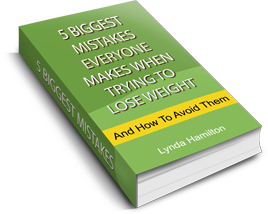How To Eat a Low GI Diet, Effortlessly
It’s easier than you think to eat a low GI diet. Sydney dietitian Lynda Hamilton explains what low GI foods are, and how to eat a low GI diet, effortlessly.
I speak a lot about low GI foods, meals and snacks so I thought it was time for a blog post to discuss what they are and explain how you can easily eat a low GI diet, effortlessly with my low GI diet tips.
Anyone with diabetes, type 2 diabetes or pre-diabetes should be eating a low GI diet to keep their blood sugar levels stable and prevent the over-production of insulin, which in time can cause other health problems. However, in terms of preventing diabetes, helping with weight loss and generally eating a healthy, nutritious diet, we should all be eating a low GI diet 99% of the time. (I say 99% because we all need the occasional treat, even dietitians! 🙂 )
GI stands for Glycemic Index and this how we measure the rate at which foods are broken down by the body and released as energy. The Glycemic Index literally measures the amount of glucose in 1 gram of a particular food and the amount this raises our blood sugars – and the index is based on the fact that pure glucose is scaled as 100.
Foods which take longer for the body to process have a low GI and are better for us. This is because the energy from the food is gradually released into the blood stream, keeping us alert and with the fuel we need to see us through the day.
High GI foods are processed quickly by the body, causing us to have a blood sugar high. This energetic high is then followed by a slump – and it is during this slump that we feel lethargic, hungry and in need of a sugary treat – usually mid morning or mid afternoon.
So what are High GI Foods?
High GI foods have a GI of 70 or above
These include white bread, bagels, pasta and mash potato; anything high sugar such as mass-produced cakes, biscuits, pastries, pies. Crisps, sugary breakfast cereals, ice cream and anything containing maltose. Honey, jam, maple syrup and of course sugar itself also fall into this category. Parsnips and watermelon are two veg that have a high GI.
Medium GI Foods have a GI of 56-69
Bananas, a jacket potato with the skin on, bran muffin, couscous, pineapple, melon, wholemeal bread, Ryvita, Jasmine rice, Shredded Wheat, no added sugar muesli, pitta bread, raisins, sweetcorn and sweet potato.
Low GI Foods have a GI of 55 or less
These include any beans (including baked beans), lentils, pulses; oats, wholemeal bread, brown rice and spaghetti. Dried apricots, milk, yoghurt, eggs, cheese and all nuts and seeds. All fruit and veg except for those previously mentioned, and dark chocolate.
Diet Tips – Eating a Low GI Diet
So how do you eat a Low GI Diet effortlessly? The basics of a low GI Diet are:
- Plenty of fresh fruit and veg, eaten raw or cooked
- Plenty of beans, pulses and lentils
- Choose wholemeal bread, rice and pasta
- Snack on nuts and seeds and the occasional couple of squares of dark chocolate
- Avoid any shop-bought cakes, biscuits, pastries, pies, crisps (including pretzels and corn chips) or ice cream. Ready meals are also a no-no.
- As fairly high GI foods, eat mashed potato, parsnips and watermelon in moderation. These are the only veg you need to worry about – but in the scale of ‘bad’ high GI foods, they are angelic nutritionally compared to shop bought pastries, desserts, pies, crisps and white processed bread. So if you love them, don’t ditch them completely from your diet – just swap them for something else half the time.
Stick to these basic rules and you will be eating a low GI diet effortlessly.
In the next blog post, I’ll share a few practical diet tips on eating low GI meals by swapping high GI foods for low GI foods.
By Lynda Hamilton, an Accredited Practicing Dietitian and Accredited Nutritionist BSc, BHSc (N&D) at Hamilton Dietetics.
As dietitian in North Sydney Lynda covers Mona Vale, Kogarah, Collaroy Plateau, Dee Why, the Northern Beaches, Palm Beach, Newport, Narrabeen and Avalon.
Read more about Sydney dietitian Lynda Hamilton and her dietitian practice in North Sydney.
Be diet free for life and never count calories again. Join Lynda’s new program – the 10 Weeks to Freedom Anti-Diet Weight Loss Program.






 Follow Us On Twitter
Follow Us On Twitter Like Us On Facebook
Like Us On Facebook Watch Us On YouTube
Watch Us On YouTube
Leave a Reply